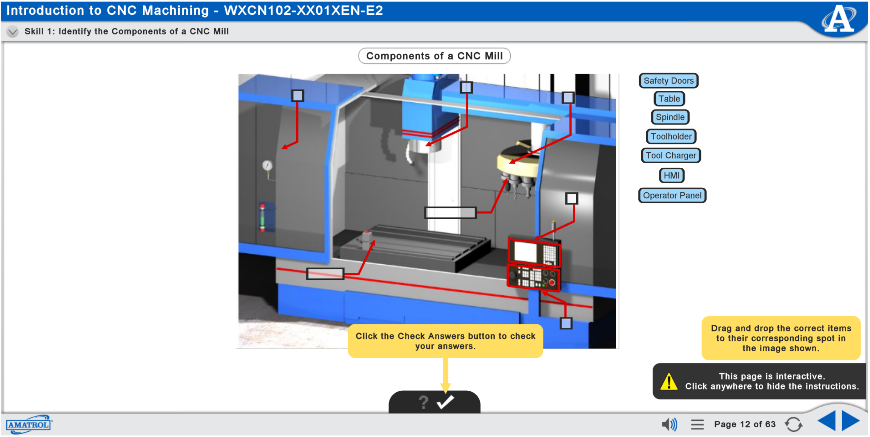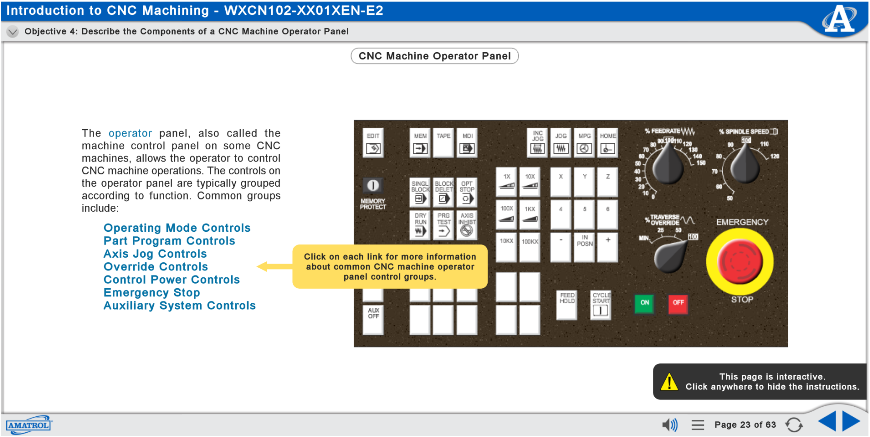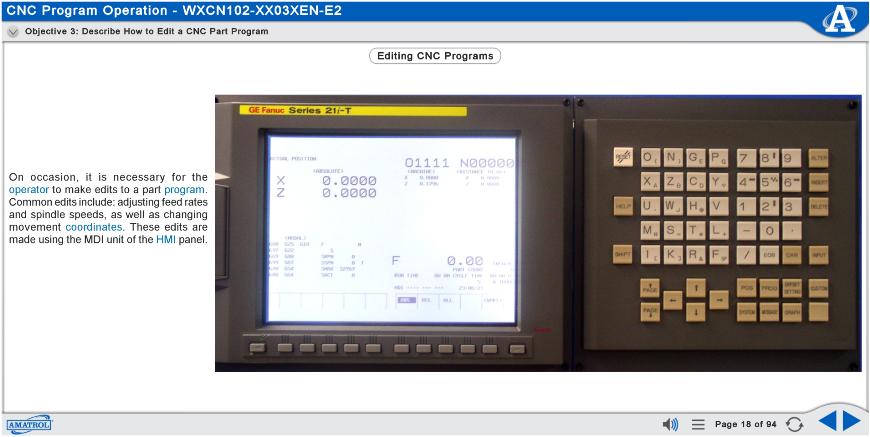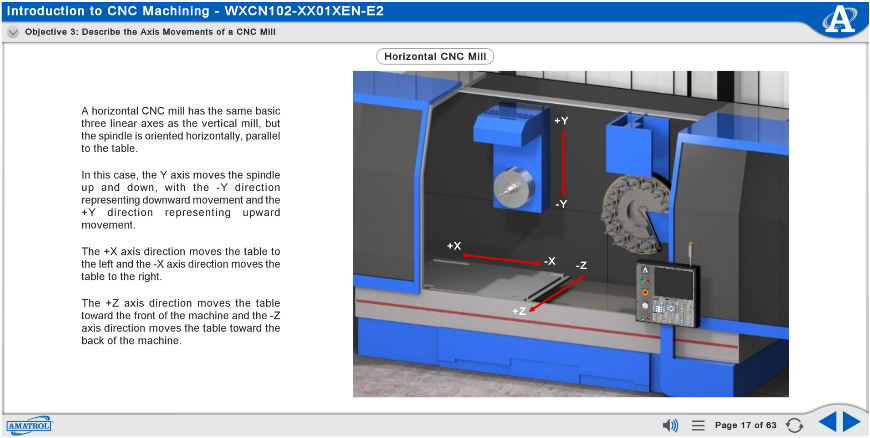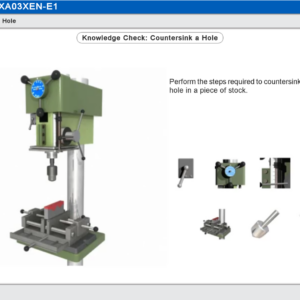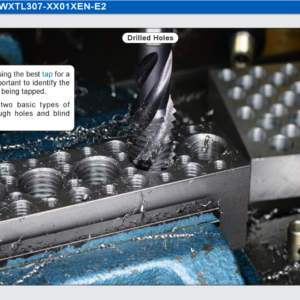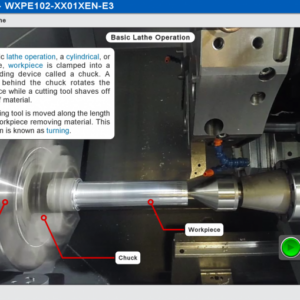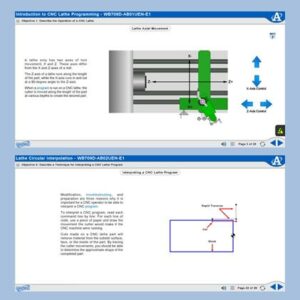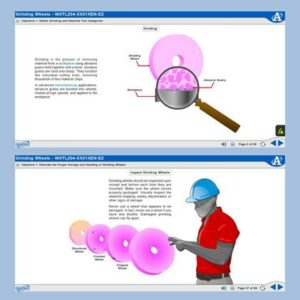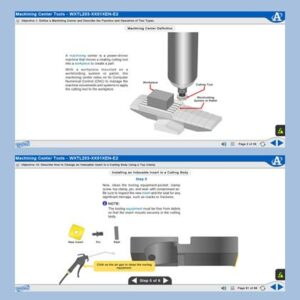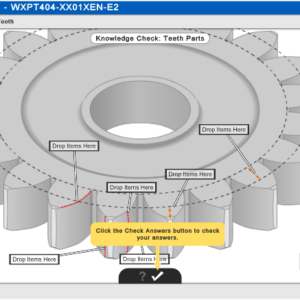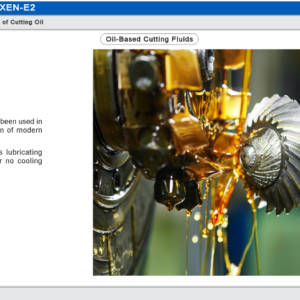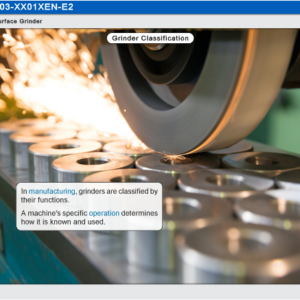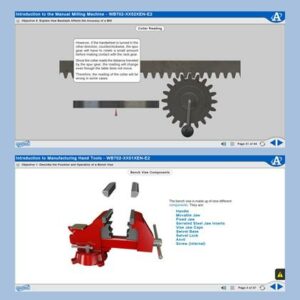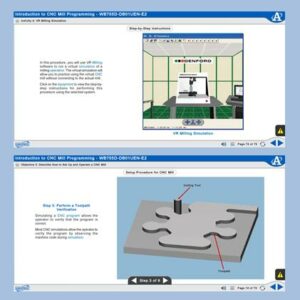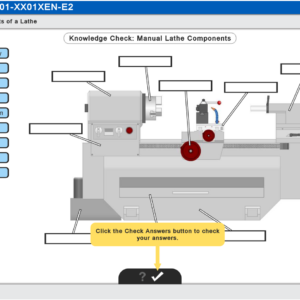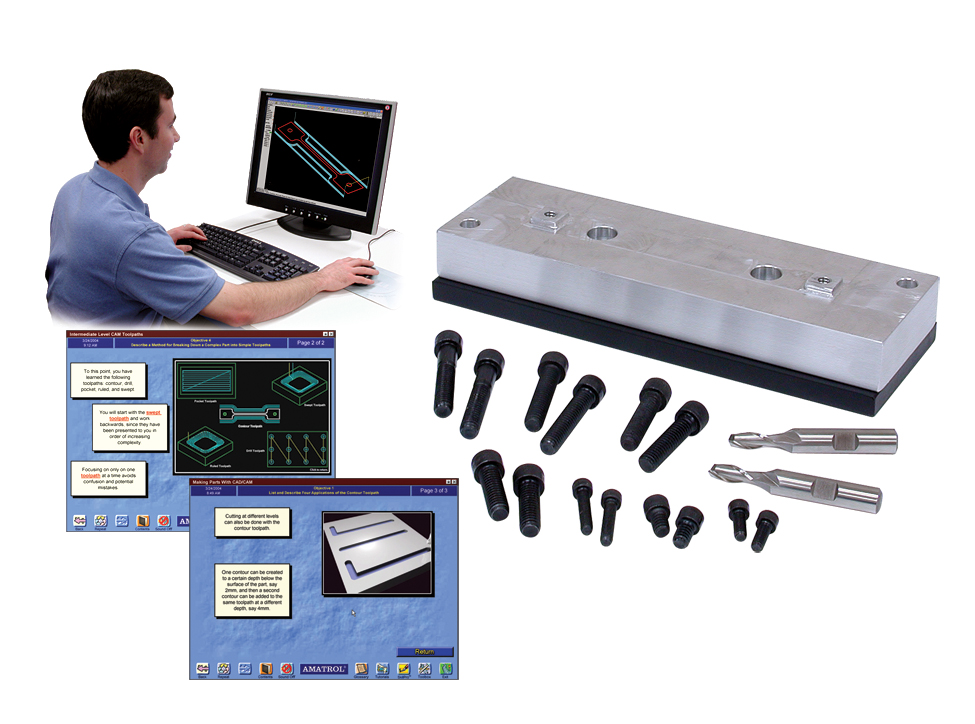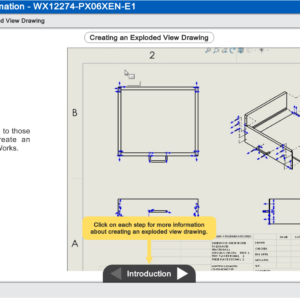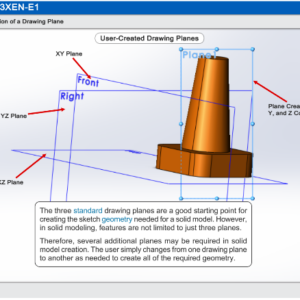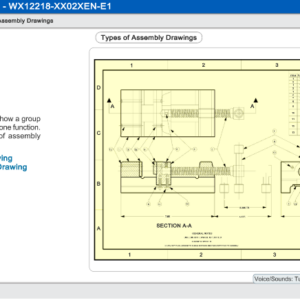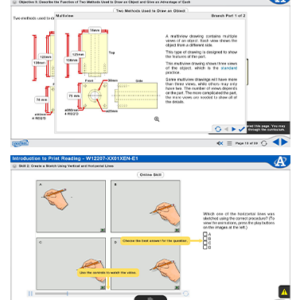Amatrol’s eLearning curriculum is unique in that it thoughtfully combines in-depth theoretical knowledge with practical, hands-on skills. This powerful combination of knowledge and skills solidifies understanding and creates a strong foundation for pursuing more advanced skills.
For example, the precision gauging eLearning course covers important topics, such as:
Introduction to CNC Machining
Learners begin with an introduction into CNC machining, including computer numerical control, operator panel, system power up, HMI panel, and modes of operation. Individual lessons focus on topics like basic operation of a CNC mill, the auxiliary systems of a CNC machine, CNC homing, and common CNC operation modes. Learners will also practice skills, such as identifying the axis movements of a CNC mill, identifying components of a CNC machine operator panel, navigating a CNC machine SMI system screen, and powering up/shutting down a CNC machine.
CNC Mill Operation
In this module, learners will study the operation of a CNC mill, including manual control, workpiece zero, tool data and offsets, and program execution. Individual lessons focus on topics like how to job a CNC machine axis, how to set-up a CNC mill, defining CNC tool offset and its importance, and how to locate and load a CNC program from a directory. Learners will also practice skills, such as jogging a CNC machine axis using a manual pulse generator, locating and setting a CNC workpiece zero, setting CNC tool offsets, and set-up and operation of a CNC mill.
CNC Program Operation
Learners using Amatrol’s FANUC CNC Control eLearning course will study basic principles of CNC program operation, including CNC program structure, linear and circular interpolation, basic miscellaneous (M) codes, and canned cycles. Individual lessons focus on topics like structure of the CNC program block, operation of the inch and metric G-codes, the operation of the work offset G-codes, function of a CNC simulation, and common canned CNC cycles. Learners will also practice skills, such as editing a CNC part program, interpretting a CNC program that uses rapid traverse and linear interpolation G-codes, interpreting a CNC program that uses circular interpolation G-codes, using a CNC simulation software to verify a CNC program’s toolpath, and interpreting a CNC program that uses a canned cycle.
CNC Turning Operation
To conclude the module, learners will study the operation of a CNC turning operation, including CNC turning machines, machine set-up and operation, liner and circular interpolation, and spindle and tool codes. Individual lessons focus on topics like components of a CNC lathe, how to set-up and operate a CNC lathe, CNC lathe program codes, operation of the interpolation G-codes, and operation of the tool change T-code. Learners will also practice skills, such as identifying the axis movements of a CNC lathe, setting-up and operating a CNC lathe, interpreting a CNC lathe program that uses incremental positioning, and interpreting a CNC lathe program that uses circular interpolation G-codes.
